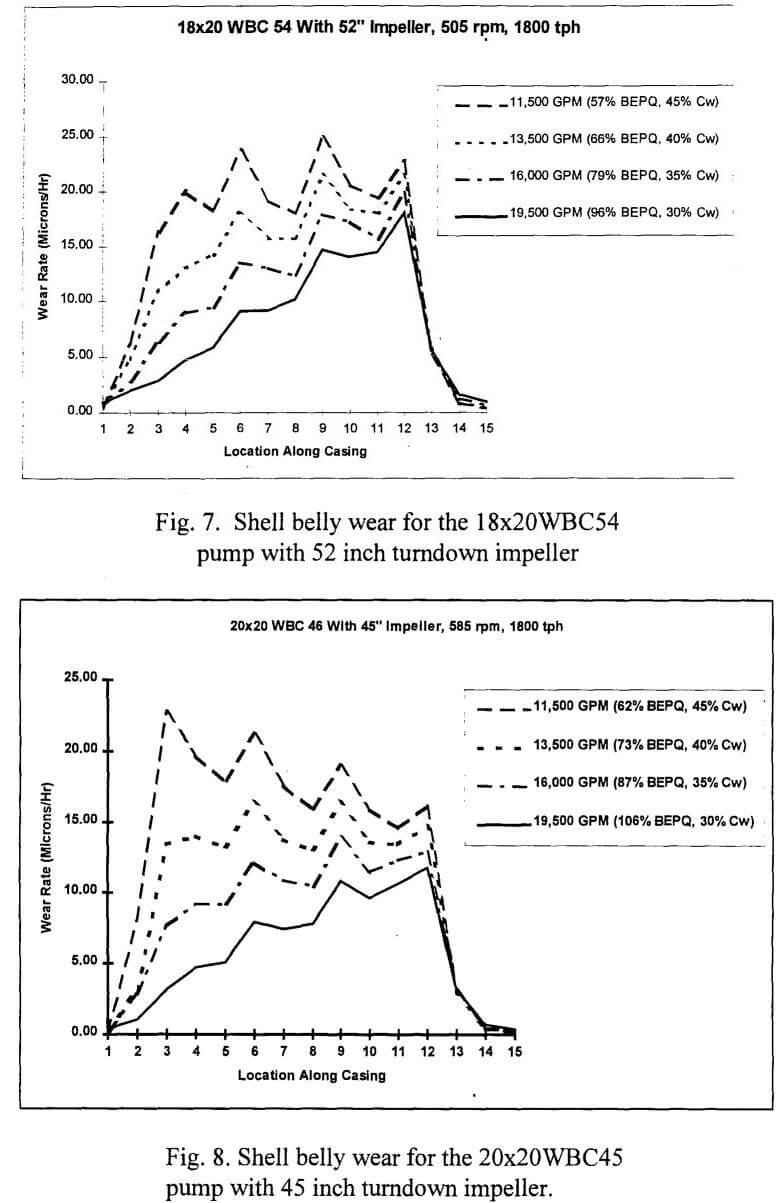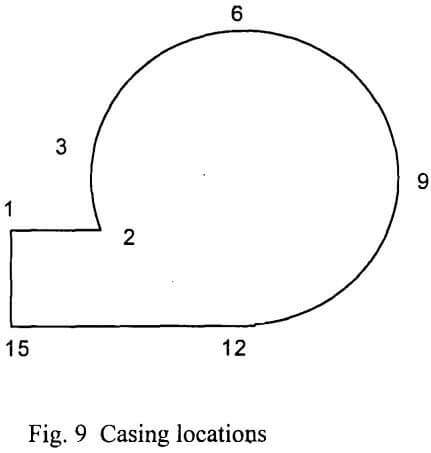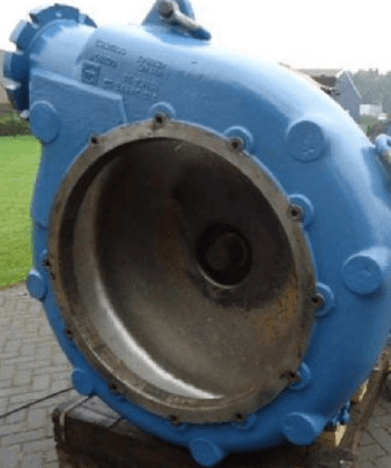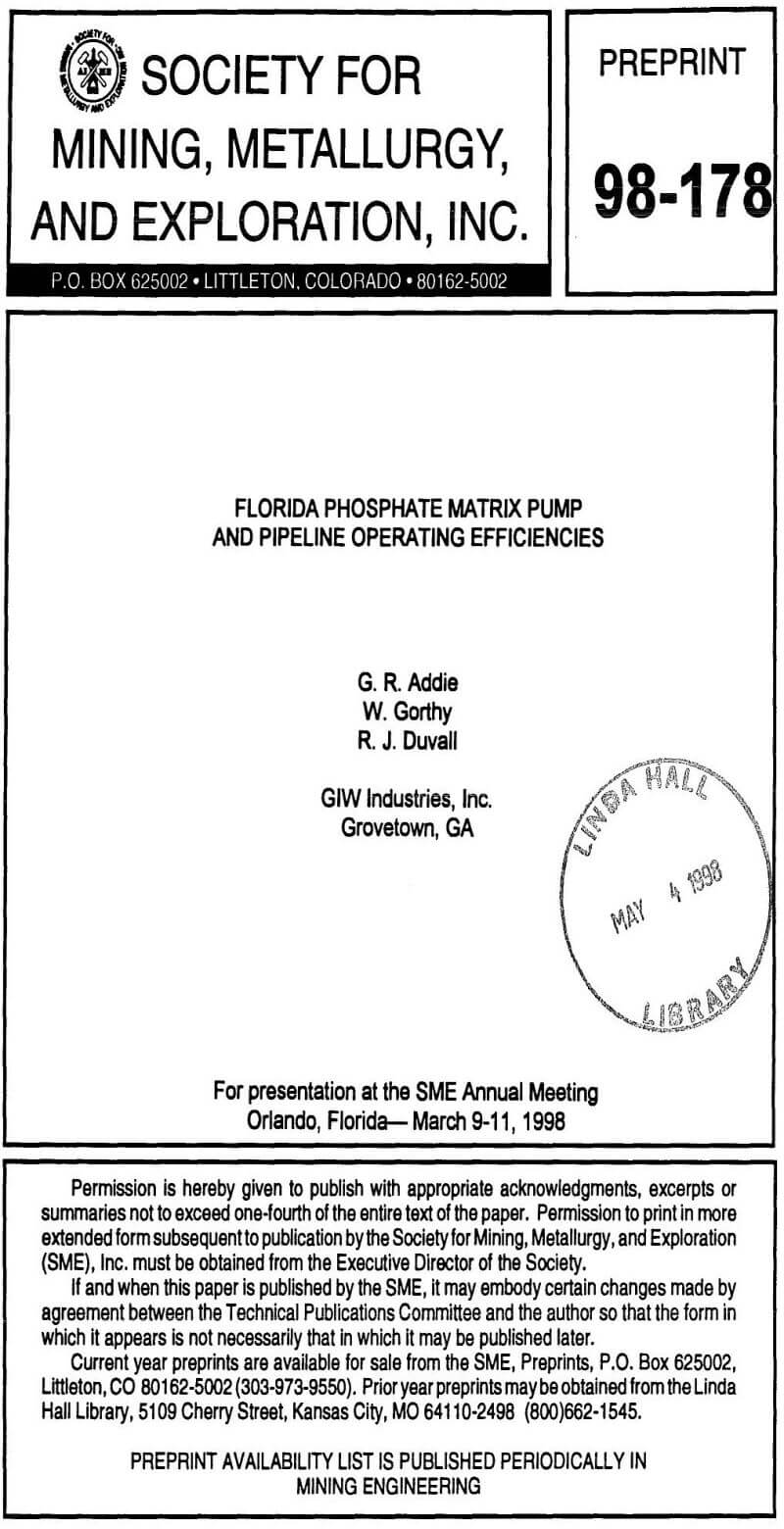
Over the last fifteen years numerical methods have been developed to enable the calculation of Centrifugal Slurry Pump Wear. The solids and slurries involved vary tremendously, and with the limitations of the calculating methods, total accuracy cannot be obtained. However, by calibrating the results with field data, the calculated data has proven to be quite useful in predicting the difference in wear between different pump designs and operating conditions.
Presently, more work is needed to improve methods for directly calculating impeller and suction liner wear. Field experience, however, shows that normally three suction liners and two impellers wear out for each shell that wears out. Thus, these ratios have been utilized along with the shell wear calculations to predict impeller and suction liner wear.
One of the most significant variables to affect pump wear is flow as a percentage of the best efficiency flow (BEPQ) for a fixed speed. Figures 7 and 8 display shell wear rates for the two pumps shown earlier in Figures 5 and 6. The wear plots show wear around the periphery of the shell at the locations marked in Fig. 9. As can be seen from the plots, for a fixed speed and throughput, the shell wear rates in this case are optimal near the best efficiency flow and lower solids concentrations.
The cost figures above do not include capital cost, downtime cost or the cost of maintenance of the rotating assembly. They do, however, present some very interesting information from an electrical operating and wear part cost point of view. While there is a difference in impeller diameters, the difference in speeds (and the wetted sections) are such that both pumps operate at a range of flows from about 100% of the best efficiency flow (BEPQ) to about 60% of BEPQ, with both pumps having the same peak efficiency varying from 81 to 82%, depending on the slurry concentration.
As could be expected, the total cost to pump 1800 TPH with 19¼ inch pipe is significantly less than with 17¼ inch pipe, regardless of the pump used or slurry concentration; the total cost to pump with the 19¼ inch pipe is 35-40% less than with 17¼ inch pipe. Furthermore, a comparison between the components of total cost, electrical operating and wear part costs shows this same relationship between pipe sizes.
It is interesting to note that electrical operating and wear part costs drop significantly as slurries are pumped at higher concentrations. Electrical operating costs for pumping at 45% concentrations are roughly one third the cost of pumping at 30% concentrations, and while the shell wear life drops with higher concentrations, the pipeline losses also drop (for the lower flow rates) significantly enough that it becomes possible to move the slurry with fewer pumps, thereby bringing the wear part costs for the higher concentrations to roughly 60-70% of that of the lower concentrations.
 |
 |
A total cost comparison shows only a small difference in cost between pumps; for a given pipe size, the total cost to operate the WBC46 pump is 2.5-7.5% less than to operate the WBC54 pump. The parts life of the smaller, faster turning, WBC46 pump is surprisingly 10-50% longer than the larger WBC54 pump, with the wear life being lowest for both pumps at the highest slurry concentration. However, the wear part costs are much smaller than the electrical costs (wear part costs are roughly 10-30% of the electrical costs). In fact for the higher slurry, concentrations, where the pump has the lowest total cost of operation, although the WBC46 has roughly a 30% lower wear part cost than the WBC54 pump, the WBC54’s slightly lower power cost per ton-mile almost completely negates its higher wear part cost.

